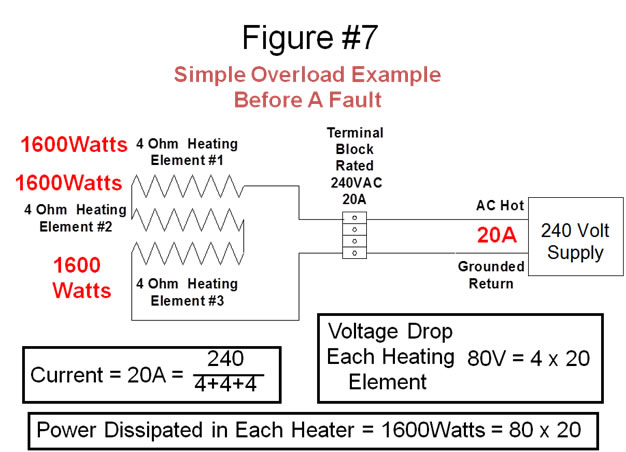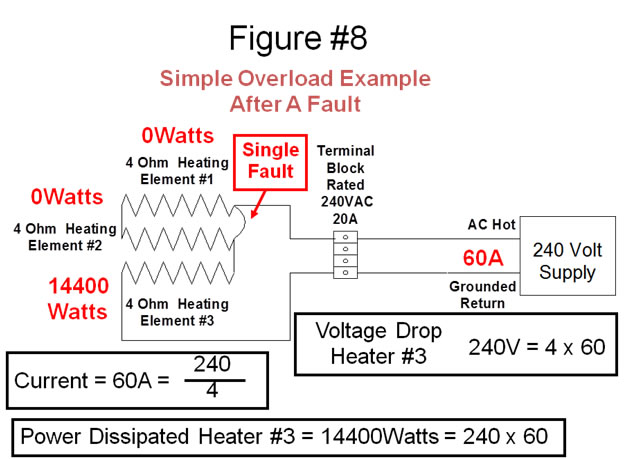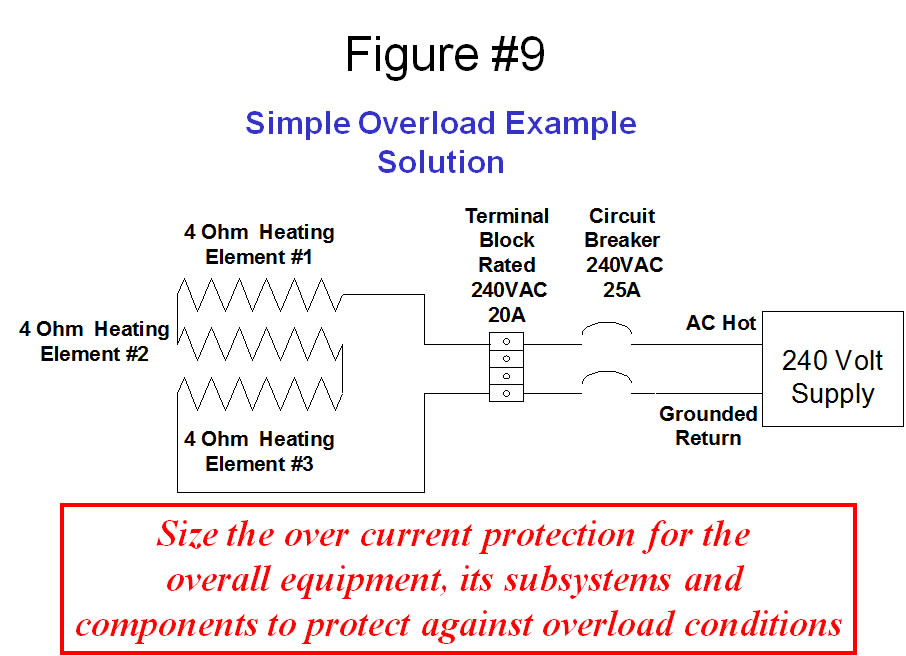Basic Electrical Safety
Fire Due to Overload
Another common fault condition that causes electric fires is an overload condition. Overload is distinct from a short circuit. An overload condition occurs when there is an electric fault in a system that results in abnormally high amounts of current but far less than a short circuit. In other words, an overload fault results in significantly reduced resistance, but resistance that also remains significantly above 0 – unlike a short circuit fault. Complex industrial systems present many opportunities for such faults. In Figure #7 there is a simple power circuit that can be used to illustrate an overload fault.

This circuit consists of 3 identical heaters that are 4 ohms each and generate 1600 watts of energy each. They are in series so the total resistance of this circuit is 12 ohms. Now if a fault occurs across the base of two of the heaters as shown in figure #8, these two heaters are effectively taken out of the circuit reducing the total resistance of the circuit to 4 ohms.

The voltage drop across the remaining heater will increase by a factor of 3 and because of the reduced resistance the current will increase by a factor of 3. The power generated by the heater will increase from 1600 watts to 14400 watts. The physical design of this system will in most likelihood not be able to safely dissipate such a major increase in the thermal energy generated in this location. Moreover a circuit breaker with an oversized trip value will not eliminate this fault. The circuit breaker must be sized appropriate to the load to ensure it will detect this type of fault and disconnect power to this circuit. Figure #9 shows how this system can be modified to protect against the risk of fire that results from this single fault. This example demonstrates why sizing circuit breakers appropriate to the load is an essential part of electrical safety and the correct way to protect against overload faults.
